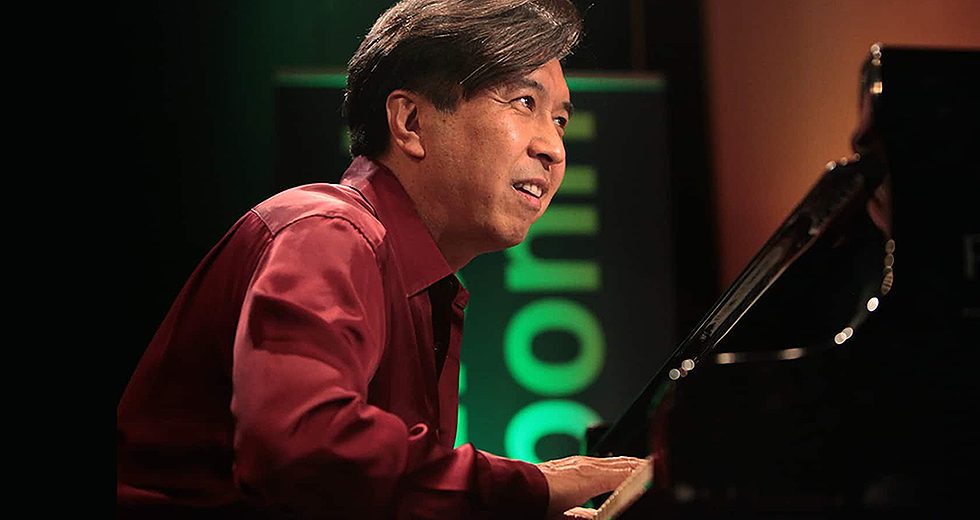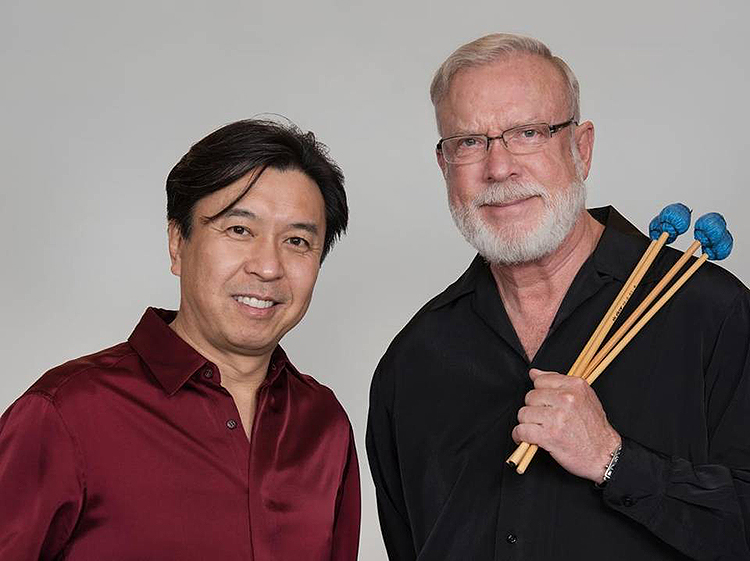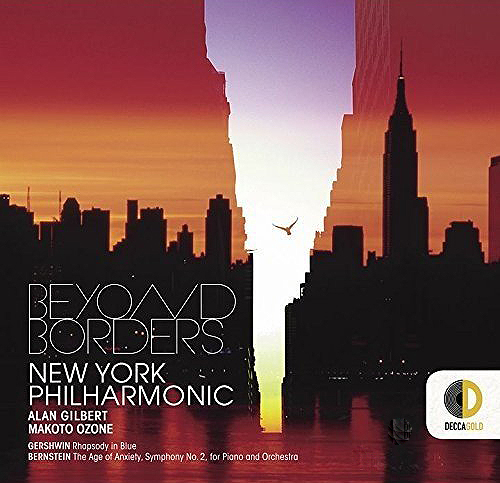
With more than 40 recordings to his credit and a history of collaborations with such heavy-hitters as Gary Burton, Branford Marsalis and Chick Corea, Makoto Ozone has a secure standing among the world’s top jazz artists.
But not content to stick with one genre, the Japanese pianist has crossed into the world of classical music over the last decade or so, releasing earlier this year what he calls “first authentic classical album.” And he made no compromises when it came to collaborators, appearing with no less than the New York Philharmonic and former music director Alan Gilbert.
Ozone will make his Chicago Symphony Orchestra debut July 23 when he joins guest conductor Marin Alsop as soloist in George Gershwin’s beloved Rhapsody in Blue — a work he first played in 1996. He has collaborated once before with Alsop during a set of concerts last summer with Brazil’s São Paulo Symphony Orchestra, where she serves as music director. “We were having lunch, and she said, ‘Do you want to play in Chicago?’ And I said, ‘Do you think anyone would say no?’ ” (While the Ravinia concert will mark Ozone’s classical debut in Chicago, he has performed previously at the festival with Gary Burton and also appeared at Evanston’s SPACE last year as part of the legendary jazz vibraphonist’s retirement tour.)
Asked what he can bring to Rhapsody in Blue that perhaps a traditional classical pianist can’t, Ozone had a quick response: “I can swing,” he said with a laugh. “I can make that thing swing.” At the same time, he adds some of his own improvisations to the cadenzas while trying not to lose the integrity of the original composition. “I believe that any improvisation that takes place should be based on the theme or the motif or the vibe of the original written notes,” he said.

Pianist Makoto Ozone, a longtime musical partner of jazz legend Gary Burton, joined the vibraphonist on his farewell tour in 2017.
He’s not trying to update Rhapsody in Blue, because that would make it seem as though as it dated — something he does not believe. But he does want to make sure that the piece connects with today’s listeners, and he believes improvisations drawn from his contemporary musical vocabulary can do just that.
Even though Rhapsody in Blue certainly fits the definition of a classical work, Ozone thinks of it more as a jazz composition. “Something tells me this is very much a jazz piece as opposed to another of his [Gershwin’s] compositions, Concerto in F,” he said. “The Rhapsody in Blue is more forgiving. It has more space for us jazz musicians to take chances and improvise.”
Because of those feelings about the piece, Ozone actually dates his entrée into the classical world to a 2003 concert with the Sapporo Symphony Orchestra in Japan. When he got the offer for the engagement, Ozone assumed he be would be playing Rhapsody in Blue, because he knew the conductor and the two had discussed performing that work together. A few months later, though, Ozone’s manager called the orchestra to confirm the details, and the pianist was surprised to learn that the orchestra was planning on him serving as a soloist for a Mozart piano concerto.
“I said, ‘Oh, no, no, this is something very wrong here. I can’t play Mozart. I’ve never played Mozart in all my life,’” he recalled. He asked the orchestra if he could play Rhapsody in Blue as he had intended, but it was too late to make the switch. He then found himself having to pick the Mozart concerto he wanted to play, so he rushed out and bought a boxed set of the complete recordings of the pieces. “I got to the record store only to find out that he has written 27 concertos,” Ozone said of the celebrated composer. “I had no idea he had written that many.” After listening to the works for 10 days, he picked the Piano Concerto No. 9 in E-flat Major (Jeunehomme), K. 271, one of the most admired of the composer’s creations in the form.
Ozone was so nervous that he does not remember how that first performance went. But the conductor liked it well enough to begin spreading the word in Japan about Ozone’s abilities in Mozart, and other orchestras quickly wanted to book him.
“I truly fell in love with his music, because the way he has constructed all the music was so similar to the mentality of how all the improvisers do it,” Ozone said. “I had a great sort of illusion of having a conversation with Mozart when I was practicing this piece.”

Makoto Ozone recorded this live disc, which features Rhapsody in Blue, with the New York Philharmonic. So far it’s available only in Japan.
The first few times the main theme appears, it is grounded. But when it returns the third time, the pianist said, it’s as though he takes the listener to Mars or Venus. “I literally cried,” Ozone said, “because I was like, ‘This is so similar to how I improvise.’ ” To put it simply, Ozone was hooked. Orchestras began asking him if he could perform other Mozart concertos besides the No. 9, so he learned more of them. In each case, he performs his own cadenzas but he makes a point to leave out what he called “blue notes.”
“That’s how I stumbled in the classical world — totally by accident,” he said.
In addition to his work with Japanese orchestras, he has appeared in the United States with the Detroit and San Francisco symphonies. In 2010, he released an album titled Road to Chopin, commemorating the 200th anniversary of the composer’s birth and undertook a Japanese tour to promote it. Four years later, he took part in a New York Philharmonic tour to Asia with Gilbert. The two hit it off so well that the conductor invited the pianist to New York a few months later to perform a speical concert with the orchestra.
New York Times music critic Corinna da Fonseca-Wollheim heaped praise on Ozone’s “thrilling, virtuosic and unabashedly personal” rendition of Rhapsody in Blue. “Putting a jazz pianist in charge of Gershwin’s solo part makes sense: Much of the work’s appeal comes from the way the luscious orchestral texture meshes with the free-sounding, bluesy piano part,” she wrote. “But the work also requires a familiarity with the language of classical Romanticism. In a series of dazzling, improvised cadenzas, Mr. Ozone showed how much classically grounded technique can expand a jazz pianist’s freedom: It opens that many more musical worlds to roam.”
In November 2017, the N.Y. Phil invited Ozone back as part of its celebration of the centennial of Leonard Bernstein. Again with Gilbert on the podium, Ozone served as soloist for both Rhapsody in Blue and Bernstein’s Symphony No. 2 for Piano and Orchestra (The Age of Anxiety). “I found out when I actually got to the concert that it’s pretty tough physically to play two major concertos,” he said. The orchestra recorded all of the concerts and released a live album titled “Beyond Borders” with the two works. “At this point, it’s only out in Japan, but I hope they will release it in the States soon,” Ozone said.